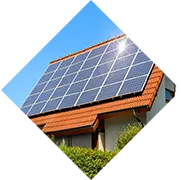Exploring Various Sizes of Solar Panels and Their Unique Benefits
Understanding Different Solar Panel Sizes A Guide to Choosing the Right Fit for Your Needs
As the world increasingly turns towards renewable energy, solar power has emerged as a leading choice for homes and businesses alike. Solar panels harness the sun's energy, converting it into electricity that can power your home, reduce your utility bills, and contribute to a more sustainable future. However, with the diverse range of solar panel sizes available, selecting the right one can be challenging. This article delves into the various solar panel sizes, their advantages, and how to choose the perfect fit for your energy needs.
The Basics of Solar Panel Sizes
Solar panels typically come in standard sizes, which can vary based on the manufacturer, technology, and intended application. The most common sizes of residential solar panels are between 60 and 72 cells, with the following dimensions
1. 60-Cell Solar Panels Standard residential solar panels are usually 65 inches by 39 inches. They are compact and well-suited for homes with limited roof space. Most 60-cell panels produce between 250 to 320 watts, making them a popular choice for average residential energy needs.
2. 72-Cell Solar Panels These panels are larger, measuring approximately 77 inches by 39 inches. They generate more power due to their additional cells, producing between 350 to 400 watts. The 72-cell panels are ideal for larger homes or commercial applications where space is less of a concern, as they can efficiently translate larger energy needs into fewer panels.
3. Bifacial Panels An emerging option, bifacial solar panels can capture sunlight on both sides, increasing energy efficiency. These can come in both 60 and 72-cell configurations and are popular in installations where light reflects off surfaces, such as rooftops or ground mounts.
4. Thin-Film Solar Panels Unlike traditional silicon panels, thin-film solar panels are lightweight and flexible, making them easier to install on unconventional surfaces. These panels may cover more area and can generate less power per square foot, making them a less common choice for residential installations.
Factors to Consider When Choosing Solar Panel Sizes
different solar panel sizes

When selecting solar panel sizes, there are several factors to consider to ensure you meet your energy needs efficiently
1. Roof Space The amount of available roof space is a crucial factor in determining the size and number of solar panels you can install. Smaller panels may be necessary for roofs with complex shapes or obstructions, such as chimneys or vents.
2. Energy Consumption Analyze your household energy consumption by reviewing past utility bills. This will help you gauge how much energy you need to generate from your solar panel system. Larger panels produce more energy, which can be beneficial for those with higher consumption rates.
3. Aesthetic Preferences Some homeowners prioritize the visual appearance of their solar panels. Larger panels might be less visually appealing on small roofs, while smaller panels can blend in more easily with the structure.
4. Budget The cost of solar panels generally increases with size and efficiency. Assess both upfront costs and long-term savings when deciding on size. Remember that while larger panels may cost more upfront, they might also result in overall savings by reducing the total number of panels required.
5. Inverter Capacity The inverter converts the DC electricity generated by solar panels into AC electricity for home use. Ensure that the inverter you choose can handle the power output of your selected panel size.
Conclusion
Choosing the right solar panel size is essential for optimizing energy production and ensuring a successful solar installation. With options ranging from compact 60-cell panels to larger 72-cell models, understanding your energy needs, roof space, budget, and aesthetic preferences can help streamline your decision-making process. Additionally, staying informed about emerging technologies like bifacial and thin-film panels can open up new possibilities in harnessing solar power. As you explore the path to renewable energy, remember that the right solar panel size can lead to a sustainable and eco-friendly future.
-
String Solar Inverter: The High-Efficiency Solution for Smart Solar EnergyNewsJul.14,2025
-
Revolutionizing Rooftop Energy with the Power of the Micro Solar InverterNewsJul.14,2025
-
Power Independence with Smart Off Grid Solar Inverter SolutionsNewsJul.14,2025
-
On Grid Solar Inverter: Powering the Future with Smart Grid IntegrationNewsJul.14,2025
-
Monocrystalline Solar Panels: High-Efficiency Power for the Future of Clean EnergyNewsJul.14,2025
-
Bifacial Solar Panel: A Smarter Investment for Next-Generation Energy SystemsNewsJul.14,2025







